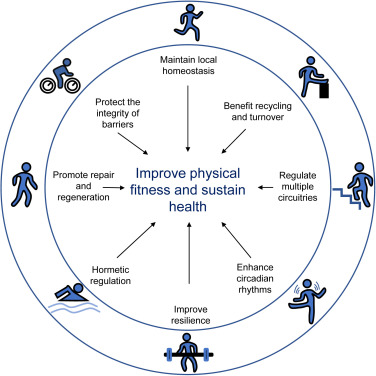
5 Most Common Mistakes in Strength Programming
Introduction: Strength Without Strategy Is Just Lifting
Every lifter wants to get stronger — but many fail not because they lack effort, but because their program lacks structure. The truth is, even highly motivated athletes can waste years under the bar if their program ignores basic strength science. Here are the five most common programming mistakes that stall progress, cause injuries, and limit potential — and how to fix them, using evidence-based principles from NASC’s coaching framework.
1. No Progressive Overload — Same Weight, Same You
The first and biggest mistake is simple: not progressing the load. If you’re lifting the same weights for the same reps week after week, your body has no reason to adapt. Strength follows the law of progressive overload — gradual increases in intensity, volume, or complexity to force adaptation.
Fix it:
Track your lifts. Add small, consistent increments (2–5%) to your main lifts every 1–2 weeks. If weight can’t increase, raise total volume or reduce rest periods strategically.
“Without overload, there is no adaptation — only maintenance.”
— NASC Training Principle
2. Random Training — No Structure, No Direction
Many athletes train based on “feel” or social media workouts. The result: random exercises, inconsistent intensity, and unpredictable recovery. Strength is built through periodization — structured cycles of load, recovery, and performance peaks.
Fix it:
Design a plan that cycles through phases:
-
Accumulation: Build base volume and work capacity
-
Intensification: Increase load, reduce volume
-
Realization: Peak performance before deload
This systematic approach ensures continuous progress instead of chaos.
3. Ignoring Recovery — The Hidden Half of Training
Training breaks the body down. Recovery builds it back stronger. Too many athletes push harder each session but neglect sleep, nutrition, or rest days — leading to chronic fatigue, plateau, or injury. Studies show inadequate recovery can reduce strength gains by up to 30%, even with perfect programming.
Fix it:
-
Sleep 7–9 hours consistently
-
Manage training stress using HRV or RPE tracking
-
Schedule deload weeks every 4–6 weeks
-
Prioritise nutrition: protein intake (1.6–2.2g/kg/day) and hydration
Your muscles adapt in the hours you rest, not in the minutes you lift.
4. Copying Someone Else’s Program
What works for an elite athlete, influencer, or even your gym partner might not work for you. Individual differences — genetics, training history, muscle fibre type, and recovery ability — shape how you respond to a program.
Fix it:
Customise based on your data:
-
Track your recovery rate and performance trends
-
Adjust volume or intensity based on individual response
-
Test periodically (1RM, CMJ, sprint time) to assess adaptation
“Coaching is not copy-paste. It’s adaptation.”
— NASC Coach Education Module 2
5. Neglecting Technique and Movement Quality
Many lifters chase heavier weights without mastering proper movement. Poor form leads to compensations, energy leaks, and increased injury risk — limiting long-term strength potential.
Fix it:
-
Prioritise movement before load
-
Use video feedback or velocity tracking to identify inefficiencies
-
Focus on stability, mobility, and controlled eccentrics
Strong isn’t just heavy — strong is efficient.
Bonus: Overcomplicating What Should Be Simple
Some coaches overthink programming — using exotic methods before mastering fundamentals. Science shows that basic compound lifts, consistent progression, and recovery tracking outperform “fancy” untested systems. Stick to principles, not trends.
Conclusion: Simplicity, Structure, and Science
Strength programming isn’t about doing more — it’s about doing what works. Avoiding these five mistakes will save you years of wasted effort and help you build a foundation of real, measurable progress. The strongest athletes don’t chase variety — they master consistency. At NASC, we teach that effective programming is not guesswork — it’s applied science.
References
-
Bompa, T., & Buzzichelli, C. (2018). Periodization: Theory and Methodology of Training. Human Kinetics.
-
Schoenfeld, B. J. (2010). The mechanisms of muscle hypertrophy and their application to resistance training. J Strength Cond Res.
-
Fry, A. C., & Kraemer, W. J. (1997). Resistance exercise overtraining and overreaching: neuroendocrine responses. Sports Medicine.



